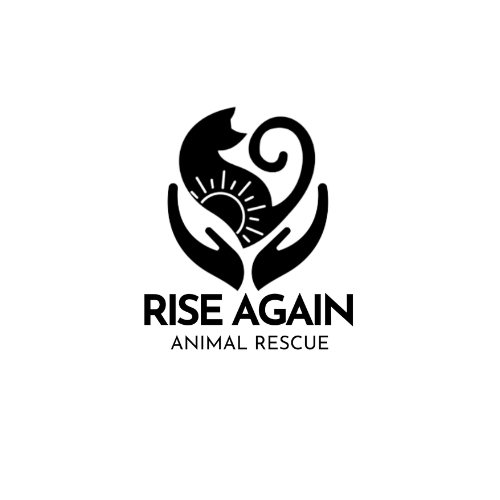Racial and Economic Equity in Animal Welfare
Racial and Economic Equity in Animal Welfare
Today the US celebrates Dr. Martin Luther King Jr.’s birthday; many organizations hold days of service, and acknowledge it (usually performatively) by posting Dr. King’s quotes. Animal rescues and shelters recycle the images with misattributed MLK quotes (no, seriously — he never said that. Google it before reposting.) It may be difficult to find a genuine Dr. King quote talking about animals for one reason: Dr. King chose his battles — he may have been an animal lover, but he advocated for human civil rights, specifically racial and economic equality. We in animal advocacy community absolutely can celebrate his day — but let’s do so by honoring his legacy, not fake quotes.
It cannot escape anyone’s notice that animal rescue community is mostly composed of white, middle-aged (or older), and middle-class women. It is our responsibility to take a long look at our practices, and ask ourselves: why are we not more diverse? Is there something that we are doing that discourages participation of Black, Indigenous, people of color (BIPOC)? And what can we do to make rescue community more representative of modern America? How can we ensure that our volunteers, fosters, and adopters are more diverse? Can we lessen the economic barriers to animal adoption? And in the process, we can honor Dr. King’s work on racial and economic justice!
Dr. KIng’s Poor People’s Campaign, launched in 1968 shortly before his assassination, came from his recognition that race affects wealth: centuries of enslavement and discrimination created economic disparity that persists today. (According to Brookings Institute, the net worth of a typical white family was nearly ten times greater than that of a Black family ($171,000 vs $17,150) in 2016. In 2022, this racial wealth gap is even greater, especially among older adults: the median white American in their late fifties has $251,000 more wealth than the median Black American.) At the same time, Dr. King knew that Black Americans were not the only ones suffering in poverty; he recognized the need for broad coalition-building across racial lines, so that people from a variety of backgrounds and cultures could be united by a common cause. Like W.E.B. Dubois before him, Dr. King asked white Americans for solidarity with their Black counterparts in order to build a more just world for everyone.
This approach, if applied to animal welfare. recognizes that we have a common goal — reducing overpopulation of stray animals, and finding animals in shelter and rescue system permanent homes. To be truly inclusive, animal advocates need to let go of seeing low income communities as part of the problem, and recognize that they are the solution — if we can meet them where they are at, and remove barriers to adoption. We also need to include BIPOC communities regardless of income level by not just passively expecting them to participate but by active recruitment. So let’s take a look at the potential sources of bias and discrimination, and how they affect the stakeholders in the rescue community (volunteers, adopters, and pet owners)… and things we can do to fix this!
1. Volunteers: rescues and shelters need to create a welcoming atmosphere for BIPOC volunteers — which may be hard to do when everyone in your rescue is an older white woman. How do you recruit for volunteers? If it’s only on Facebook, your efforts are likely targeting only the older, whiter population. Consider using other platforms — TikTok and Instagram, for two. Reach out to schools and universities. Explicitly say that you welcome volunteers of color — then make them feel welcome!
Review your social media. Are you sharing content appropriating the rhetoric of civil rights movement in a way that is off-putting to BIPOC? Example: using slogans like “Animal Lives Matter” (trivializing of Black Lives Matter movement). Another common example: Pit-bull advocates comparing “breedism” to “racism” — again, trivializing the experience of Black people under systemic racism, and implicitly drawing parallels between dog breeds and human races (breeds have been created through selection programs, and do have somewhat predictable characteristics; human races are an artificial construct used exclusively in service of white supremacist ideologies, and forming the basis of discriminatory societal systems). Reach outside of your immediate circle of friends and community — we are still a segregated country, and according to a recent study by Public Religion Research Institute, as many as 3/4 of white Americans don’t have any Black friends.
2. Adopters: review your application form and application process; find areas where you could potentially be exercising biased practices. Do you respond to every application? If not, it becomes easier to ignore applicants with “ethnic” names, or the ones who rent rather than own. Do you require a fenced in yard for dogs? If so, why? Most common answer: exercise. But of course a dog who gets regular walks with a dedicated owner gets as much if not more exercise than a dog sauntering across the yard, and it gets to sniff a bunch of novel things on the way — a great enrichment activity! Dogs left alone in the yard may rehearse bad behaviors, such as barking at all passersby, something that dogs walked by the owners cannot do. Consider asking the adopters about their exercise and enrichment plan, not whether they have a yard!
Do you allow to pay adoption fee in installments? Do you accept forms of payment other than Venmo and PayPal (such as Cashapp?) If not, you should! Do you do home checks? Consider saving those for truly difficult decisions, because for a BIPOC family having white women judge their living space can be very off-putting! Asking for employment information, income etc. can also be seen as discriminatory.
3. Owners: as rescue volunteers, we often have the opportunity to offer post-adoption support. It can make a difference between someone keeping an animal or giving it back. It also requires letting go of rigid ideas of pet ownership — for example, it is perfectly fine to use a low-cost clinic for routine medical care. Tell your adopters that. Give them a list of low-cost options in your area, including shelter clinics.
We also need to remember that people love their pets. Surrendering a pet is a heartbreaking decision for most, and the last thing people who are already struggling need is to be harangued by the rescues, those who are supposed to care about animal-person bond. Go to any rehoming board on Facebook, and you see people needing to rehome their animals because they lost their job and cannot afford care, facing homelessness, or need to move to housing that doesn’t allow pets being shamed and degraded. Many of them delete the post… and what happens to the animal then?
Recognize that the problem is not poor people themselves but the lives of economic precarity and predatory landlords. Replace judgement with support and see what solutions can you find — long-term foster? Placement into homes where the adopter would be able to keep in touch with animal? And speak up for the people if you see them being harassed on rehoming pages! And yes, I know we are very busy, but the organizations that represent renters’ rights are our natural allies! Let’s work with them to ensure that no landlord can arbitrarily change pet policies, or hike up rents without warning. This is what Dr. King would’ve wanted!
Finally: Sometimes, it is hard to let go of a preconceived option of what the perfect adopter would look like. We need to let go of the ideal home as a single-family house with fenced in yard, and recognize that the more people adopt their pets, the fewer will go to puppy mills, unscrupulous breeders, or get a “free” kitten off Craig’s List. If we want happy lives for our animals, we need to let go of the perennial rescue mantra of “I love animals, hate people”, and start paying attention to the other end of the leash.
Additional readings:
https://careawo.org
https://network.bestfriends.org/proven-strategies/program-spotlights/whats-next-reducing-racism-animal-welfare
https://www.brookings.edu/blog/up-front/2022/06/29/the-black-white-gap-in-wealth-mobility-and-what-to-do-about-it/amp/

